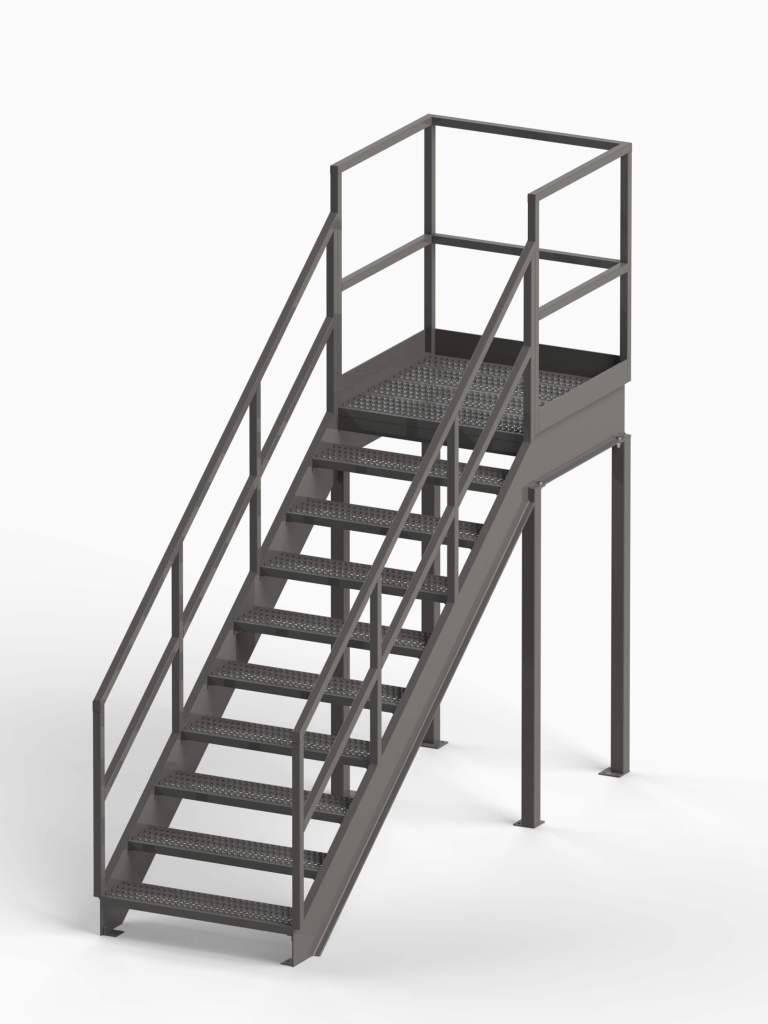
A stair platform might sound like a simple concept, but it serves a surprisingly wide range of purposes, enhancing accessibility, productivity, and even aesthetics in various settings. In this article, we’ll delve into the different facets of stair platforms, exploring their types, applications, and key considerations for choosing the right one.
Unveiling the Types: A Platform for Every Need
The diverse world of stair platforms offers options tailored to specific needs:
- Landing Platforms: These fixed platforms extend at specific landings, creating additional space for tasks like painting, cleaning, or equipment staging.
- Work Platforms: Designed for temporary access, these mobile platforms feature wheels or casters for easy maneuverability in stairwells and around uneven surfaces. They’re popular for maintenance, construction, and painting tasks.
- Stairway Access Platforms: Also known as wheelchair lifts, these powered platforms provide safe and independent access to individuals with mobility limitations. They come in various configurations to accommodate different stairway designs and inclines.
- Mezzanine Platforms: These elevated platforms, often accessed by stairs, create additional functional space in industrial or commercial settings. They can serve as work areas, storage zones, or even office extensions.
Beyond the Steps: Where Stair Platforms Shine
The applications of stair platforms extend far beyond just navigating stairs:
- Industrial Settings: From reaching machinery for maintenance to providing safe access for loading and unloading, stair platforms enhance efficiency and safety in factories, warehouses, and power plants.
- Construction Sites: These platforms offer temporary workspaces for tasks like painting, electrical work, and installing fixtures, improving worker safety and productivity.
- Residential Homes: Landing platforms create additional space in tight stairwells, while portable platforms assist with cleaning, decorating, and reaching high shelves.
- Public Buildings: Stairway access platforms ensure equal access for individuals with disabilities in government buildings, schools, and healthcare facilities.
Choosing the Right Platform: A Secure Step Forward
With a variety of options available, selecting the right stair platform requires careful consideration:
- Purpose: Clearly define the platform’s intended use, considering factors like weight capacity, platform size, and required mobility.
- Stairway Specifications: Measure the dimensions and configuration of your staircase to ensure the platform fits securely and complies with regulations.
- Safety Features: Prioritize platforms with guardrails, slip-resistant surfaces, and weight capacity certifications for safe operation.
- Material and Durability: Choose platforms constructed from sturdy materials like aluminum or steel to withstand weight and weather conditions.
- Budget: Compare costs and features to find a platform that meets your needs and budget constraints.
By understanding the types, applications, and selection criteria, you can choose a stair platform that enhances convenience, safety, and accessibility in your specific environment. So, ascend to new possibilities with the versatile and practical world of stair platforms!
Stair Platform FAQs: Frequently Asked Questions Answered
General Inquiries
1. What is a stair platform?
A stair platform is a raised structure that extends from a landing or attaches to a staircase, providing additional space and access in various settings.
2. What are the different types of stair platforms?
Landing platforms, work platforms, stairway access platforms (wheelchair lifts), and mezzanine platforms each serve unique purposes.
3. Where are stair platforms used?
They find applications in industrial settings, construction sites, residential homes, public buildings, and more.
4. What are the benefits of using a stair platform?
They enhance accessibility, safety, productivity, and even create additional functional space.
5. Are stair platforms easy to install?
Installation complexity depends on the type and size of the platform. Some require professional installation, while others are portable and user-friendly.
Choosing the Right Platform
6. How do I choose the right stair platform for my needs?
Consider the platform’s purpose, stairway dimensions, required weight capacity, safety features, materials, durability, and budget.
7. What safety regulations apply to stair platforms?
Consult local building codes and safety standards for specific requirements, especially for public usage or heavy load capacities.
8. Do I need permits to install a stair platform?
Permit requirements vary depending on your location and platform type. Always check with your local authorities.
9. How much do stair platforms cost?
Costs vary based on type, size, materials, and features. Prices range from a few hundred dollars for portable platforms to several thousand for permanent installations.
10. Where can I buy a stair platform?
Stair platforms are available through specialty construction suppliers, online retailers, and directly from manufacturers.
Specific Applications
11. What type of platform is best for wheelchair access?
Stairway access platforms with proper railing configurations and weight capacities are specifically designed for this purpose.
12. Can I use a stair platform for storage in my home?
Landing platforms can provide additional storage space, but ensure weight capacity limits are not exceeded and local regulations are met.
13. Are there any risks associated with using stair platforms?
As with any elevated structure, proper usage and safety precautions are crucial. Refer to manufacturer instructions and adhere to weight limits and safety features.
14. How do I maintain a stair platform?
Regular inspections and cleaning are essential. Consult the manufacturer’s recommendations for specific maintenance procedures.
15. Where can I learn more about stair platforms?
Manufacturer websites, industry associations, and online resources offer further information and guidance.
Leave a comment